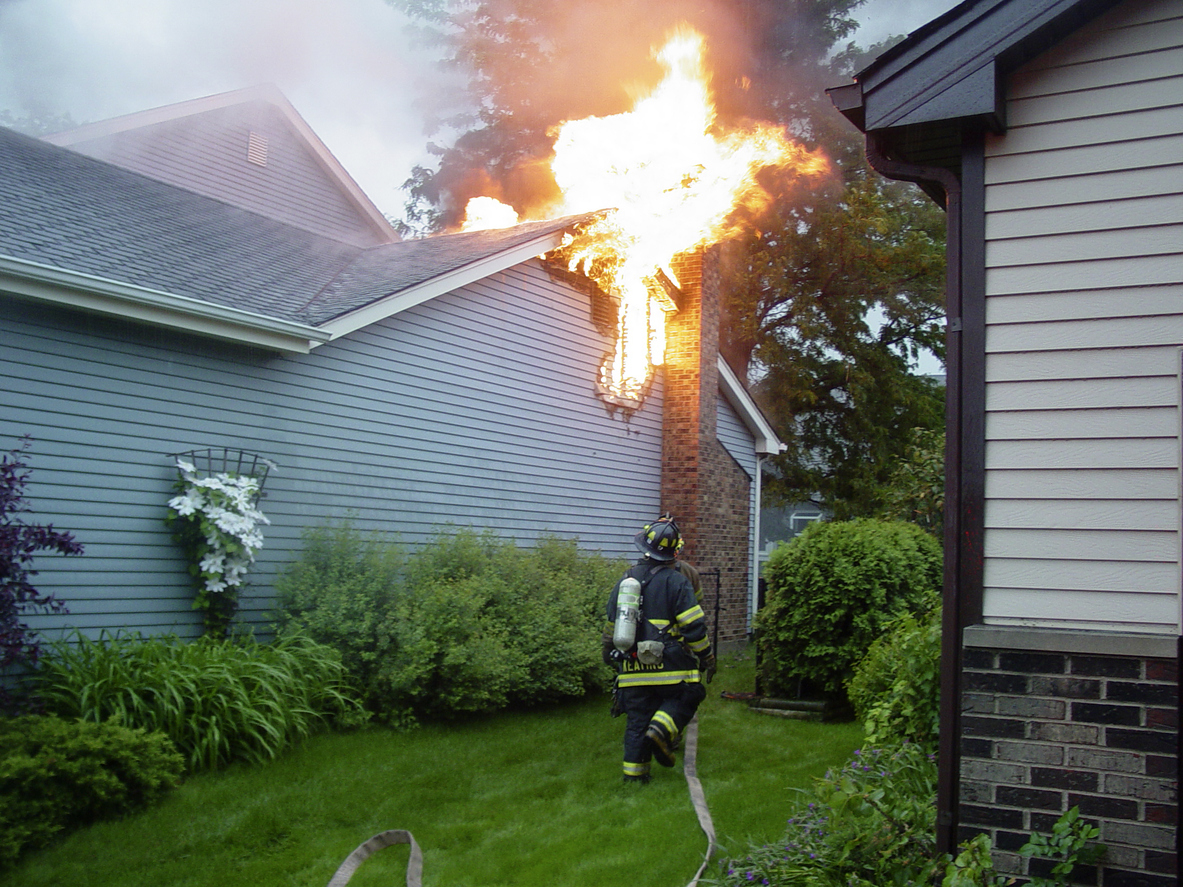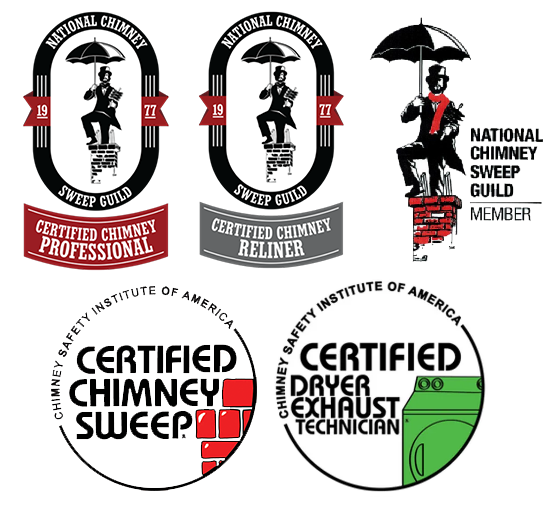
A roaring fire in your fireplace or the warmth of a wood-burning stove can create a cozy and inviting atmosphere during the colder months. However, ensuring the safety of your chimney is of paramount importance before you light that first fire of the season. In this comprehensive guide, we will explore various ways to determine if your chimney is safe to use, providing you with the knowledge and peace of mind you need to enjoy the comfort of your home’s hearth. Additionally, we will provide essential chimney safety tips to ensure a safe and enjoyable experience.
Understanding Chimney Safety Tips
A safe chimney is crucial to prevent potential hazards such as chimney fires, carbon monoxide leaks, and structural damage. Ensuring that your chimney is in good condition and well-maintained is essential for the safety of your home and family. Here are several key aspects to consider when assessing chimney safety:
1. Structural Integrity: The chimney’s structure must be sound and free from any significant cracks, leaning, or other visible damage.
2. Proper Ventilation: Adequate ventilation ensures that combustion byproducts, including dangerous gasses like carbon monoxide, are effectively vented out of your home.
3. Absence of Blockages: Chimney flues should be free from obstructions such as creosote buildup, nests, debris, or foreign objects that can hinder proper venting.
4. Adequate Clearances: Chimneys must maintain proper clearances from combustible materials both inside and outside your home to prevent fire hazards. Keep furniture and combustible furnishings a safe distance away from the fireplace or wood stove to prevent them from catching fire.
5. Liner Condition: If your chimney has a liner, it should be intact and free from damage, as it protects the chimney’s structure and prevents heat transfer. Chimney liners in masonry chimneys are crucial for safety and protection from heat and corrosion.
6. Proper Installation: Ensure that your heating appliance and chimney system have been installed correctly, following local building codes and manufacturer’s instructions. The Chimney Safety Institute of America recommends proper installation and maintenance for safety.
Now, let’s explore how you can assess these aspects to determine if your chimney is safe to use.
1. Visual Inspection:
A visual inspection is the first step in assessing chimney safety. You can perform a basic visual inspection yourself or hire a certified chimney professional for a more thorough examination. Here are some key points to consider:
– Exterior Inspection: Examine the exterior of the chimney for any signs of structural damage, such as cracks, leaning, or loose bricks or stones. Check the chimney cap and crown for signs of wear and damage. Verify that the chimney is properly capped to prevent water and animal intrusion.
– Interior Inspection: For an interior inspection, use a flashlight to peer up the chimney from the fireplace or stove. Look for any visible obstructions, creosote buildup, or signs of damage to the flue liner or chimney walls. Cracks, missing mortar, or loose bricks or tiles should be noted. Check for signs of a chimney fire, such as cracks or damage to the flue liner.
– Check for Proper Ventilation: Observe the draft and airflow when the fireplace or stove is in use. If you notice smoke spilling into the room, poor draft, or unusual odors, it could indicate a ventilation problem that requires attention.
2. Professional Chimney Inspection:
For a thorough assessment of chimney safety, it’s advisable to enlist the services of a certified chimney sweep who can perform a comprehensive inspection and cleaning if necessary. Professional sweeps are equipped to identify less obvious problems, such as internal cracks, creosote buildup inside the chimney liner, or issues with the flue that could lead to dangerous carbon monoxide leakage into your home. They follow the National Fire Protection Association (NFPA) guidelines for chimney inspections, which are designed to ensure every part of your chimney system is evaluated for safety and efficiency. Inspecting the solid fuel venting system is crucial to prevent chimney fires.
3. Creosote Buildup Assessment:
Creosote is a highly flammable substance that can accumulate on the inner walls of your chimney, posing a significant fire hazard. Creosote buildup is a common issue in wood-burning fireplaces and stoves. You can assess the level of creosote buildup by shining a flashlight up the chimney and looking for a thick, black, tar-like substance on the flue walls. If you notice a significant buildup, it’s essential to have your chimney cleaned by a professional chimney sweep to reduce the fire risk. Creosote buildup can lead to chimney fires, especially in wood stoves.
4. Clearances and Combustible Materials:
Ensure that your chimney maintains proper clearances from combustible materials both inside and outside your home. This includes maintaining the recommended distance between the heating appliance, nearby walls, furniture, and other combustibles. Check for any flammable materials, such as firewood or paper, that may be stored too close to the fireplace or stove. Clearing these areas of combustibles helps prevent fire hazards. Never leave a fire unattended to prevent potential hazards.
5. Inspection of Damper and Draft:
The damper in your chimney plays a vital role in controlling the airflow and draft. Check that the damper is functioning correctly and opens and closes smoothly. If you notice any issues with the damper, it should be repaired or replaced promptly. Additionally, pay attention to the draft when using your fireplace or stove. A good draft ensures that smoke and gasses are being drawn up and out of the chimney. If you experience poor draft or backdraft, it may indicate a ventilation problem that requires investigation by a professional chimney sweep. Maintaining a good draft is essential to prevent issues with relatively cooler chimneys and creosote buildup.
6. Carbon Monoxide Detectors:
Install carbon monoxide (CO) detectors in your home, especially in areas near the fireplace or heating appliance. Carbon monoxide is a colorless, odorless gas that can be produced during incomplete combustion. A malfunctioning or improperly vented heating system can lead to CO buildup. CO detectors provide an added layer of safety by alerting you to the presence of this potentially deadly gas, allowing you to take immediate action. Using glass doors can help keep sparks contained and provide an extra layer of security.
7. Professional Chimney Cleaning:
Regular chimney cleaning is a crucial part of chimney maintenance to reduce the risk of chimney fires and ensure proper venting. Even if your visual inspection does not reveal excessive creosote buildup, it’s advisable to have your chimney professionally cleaned on an annual basis, especially if you use your fireplace or stove regularly. Regular cleaning helps prevent issues caused by hot fires and creosote buildup.
8. Chimney Liner Assessment:
If your chimney has a liner, check for any visible signs of damage, deterioration, or gaps in the liner. A damaged or compromised liner can allow heat and combustion byproducts to reach combustible materials or penetrate the chimney structure. If you suspect liner issues, consult a certified chimney professional for a thorough inspection. Inspecting the chimney flue for any signs of damage or blockages is essential.
Ensuring that your chimney is safe to use is a critical responsibility for homeowners who enjoy the warmth and ambiance of a fireplace or heating stove. By following the steps outlined in this guide, including visual inspections, professional assessments, and regular maintenance, you can enjoy the comfort of your home’s hearth with peace of mind. Remember that chimney safety is an ongoing process, and regular maintenance and professional inspections are essential to safeguard your home and family from potential hazards.

